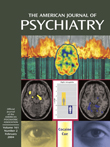Aripiprazole and Parkinson’s Disease Psychosis
Mr. A was a 70-year-old Caucasian man with a 16-year history of Parkinson’s disease who was admitted to our department for drug-induced psychosis. Clozapine had been successfully tried but was discontinued because of agranulocytosis. On admission, treatment consisted of 1200 mg/day of l-dopa/carbidopa, 375 mg/day of l-dopa/benserazide, 1200 mg/day of entacapone, and 800 mg/day of quetiapine. His physical examination revealed a slight hypomimia, a stooped posture, reduced automatic movements without major difficulty walking and turning around, and a slight resting tremor of the right hand. Mr. A’s score on the Unified Parkinson’s Disease Rating Scale (UPDRS) was 43, and his illness stage on the Hoehn and Yahr scale was 1.5. There were infrequent (two or three per week) off-episodes, with severe akinesia and rigidity lasting up to 1.5 hours. Otherwise, Mr. A’s daily activities were only moderately affected; he was a professional artist, and he produced skillful watercolor paintings during his stay. He exhibited frank psychosis with vivid visual, auditory, and tactile hallucinations and fearful delusions of persecution with maximum severity at night. The results of laboratory tests and the findings of cranial magnetic resonance imaging, ECG, and electroencephalography were normal. l-Dopa/benserazide and quetiapine were discontinued with no apparent clinical change. On day 4, aripiprazole was started at 5 mg/day and increased by 5 mg every third day up to 10 mg t.i.d. Under this treatment, progressive hypokinesia and rigidity evolved into complete akinesia, including anarthria. By day 11, parenteral fluid substitution and gavage nutrition became necessary (UPDRS score=120, Hoehn and Yahr stage=5). Hallucinations and delusions, however, continued unmodified. l-Dopa/benserazide was reestablished and increased to 125 mg q.i.d. Mr. A’s motor symptoms improved only marginally (UPDRS score=101). Nutrition was insufficient, and a weight loss of 8 kg occurred. On day 37, treatment failure was declared, and aripiprazole was replaced by ziprasidone, 40 mg/day, and increased up to 80 mg/day over 3 days. Within 2 weeks, the delusions and hallucinations had subsided completely. Motor impairment also improved to a large extent. Sitting, walking, and eating was possible, and Mr. A was able to successfully resume painting (UPDRS score=42).
References
Information & Authors
Information
Published In
History
Authors
Metrics & Citations
Metrics
Citations
Export Citations
If you have the appropriate software installed, you can download article citation data to the citation manager of your choice. Simply select your manager software from the list below and click Download.
For more information or tips please see 'Downloading to a citation manager' in the Help menu.
View Options
View options
PDF/EPUB
View PDF/EPUBGet Access
Login options
Already a subscriber? Access your subscription through your login credentials or your institution for full access to this article.
Personal login Institutional Login Open Athens loginNot a subscriber?
PsychiatryOnline subscription options offer access to the DSM-5-TR® library, books, journals, CME, and patient resources. This all-in-one virtual library provides psychiatrists and mental health professionals with key resources for diagnosis, treatment, research, and professional development.
Need more help? PsychiatryOnline Customer Service may be reached by emailing [email protected] or by calling 800-368-5777 (in the U.S.) or 703-907-7322 (outside the U.S.).

